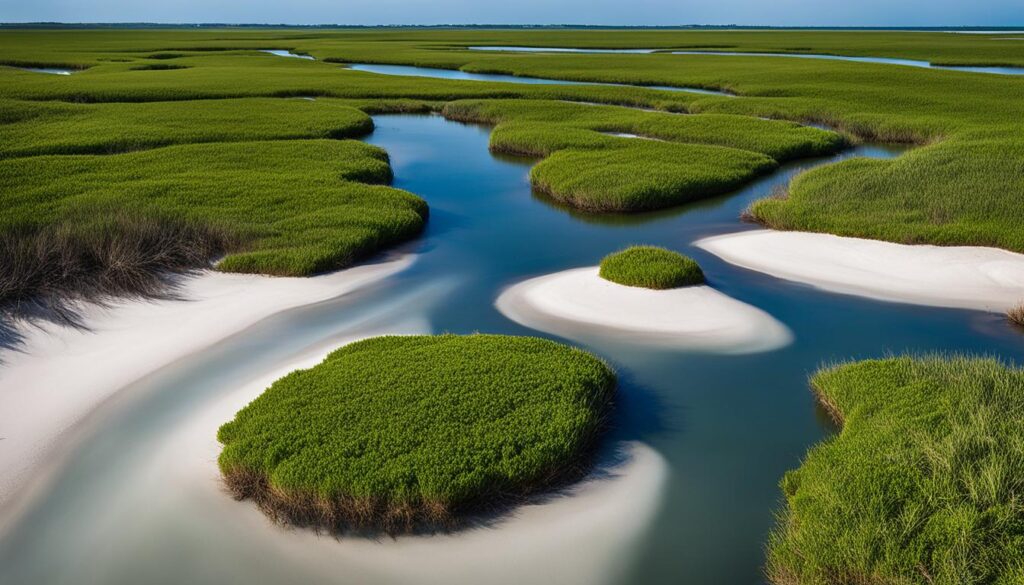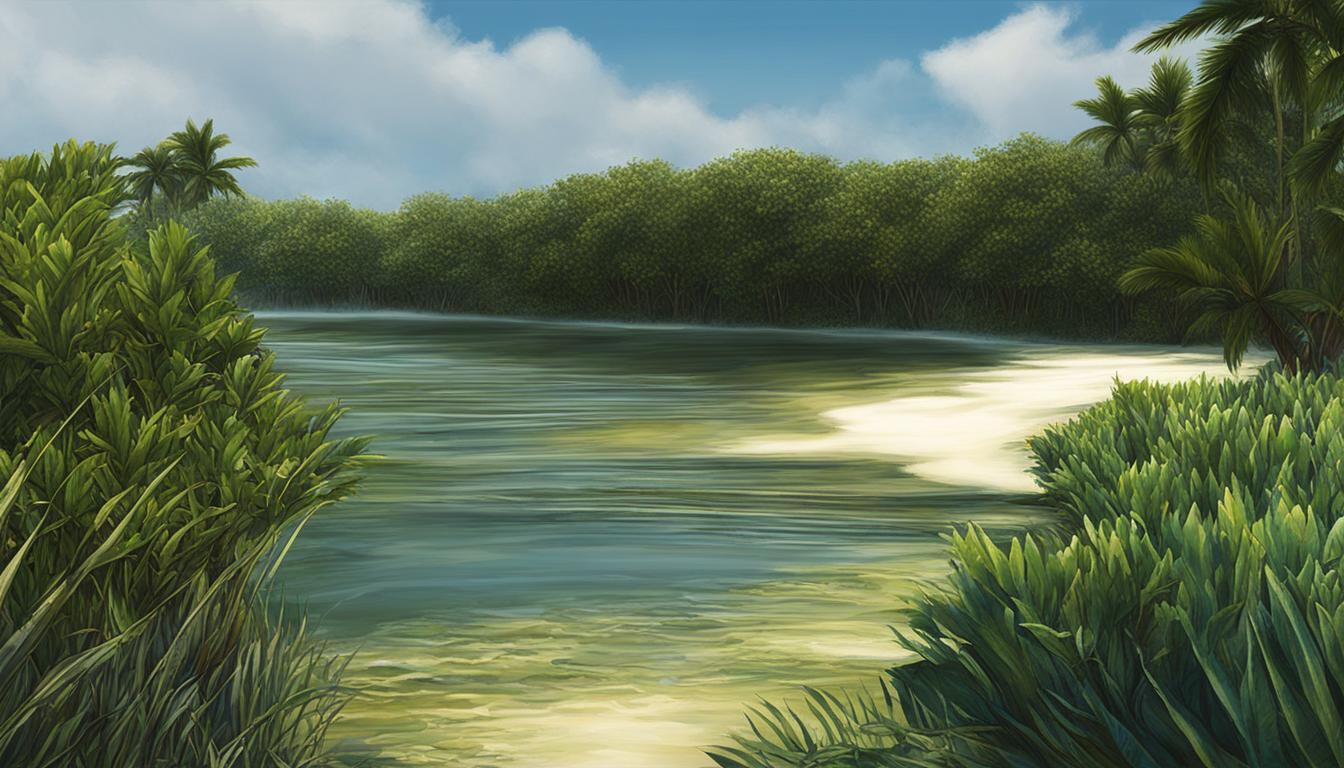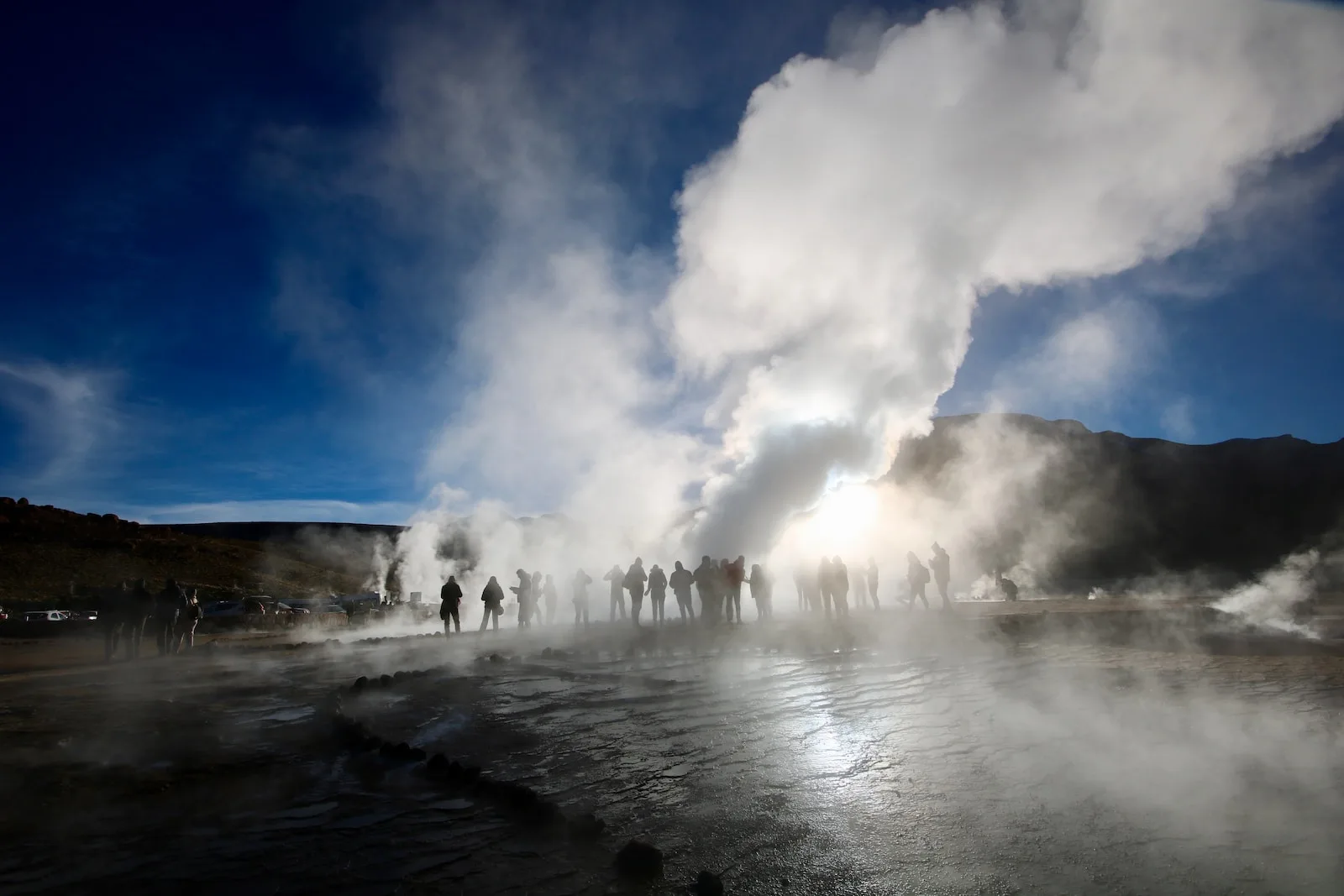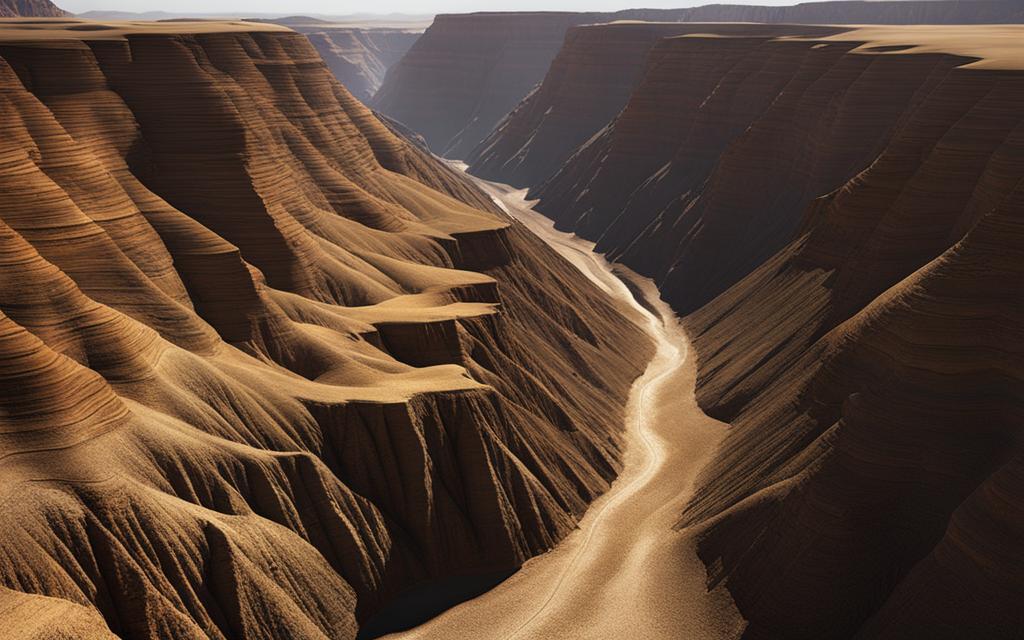Estuaries and bays are two distinct coastal features that play important roles in marine ecosystems, geological history, and human activity. The difference between estuaries and bays primarily lies in their connections to rivers and the ocean. In this article, we will delve into the key differences between these two formations, dissecting the factors that lead to their creation and the ecological significance of these unique coastal landscapes.
Key Takeaways
- Estuaries are partly enclosed bodies of water where rivers mix freshwater with seawater, whereas bays are partially enclosed by land and connected directly to the ocean.
- Famous estuaries include Chesapeake Bay and Puget Sound, while well-known bays comprise San Francisco Bay and the Bay of Biscay.
- Estuaries form when rivers meet the ocean, while bays are created by various geological processes, such as sea level changes and tectonic movements.
- Both estuaries and bays support a diverse range of marine life and play a crucial role in maintaining the health and productivity of coastal ecosystems.
- The hydrological dynamics of estuaries and bays, including salinity gradients and tidal movements, are vital for the survival and adaptation of numerous marine species.
Understanding Coastal Landscapes: Estuaries vs Bays Defined
What is an estuary? Estuaries are formed when rivers meet the ocean, establishing a mix of freshwater with saltwater. This unique combination of waters creates a thriving environment for a multitude of species. In contrast, what is a bay? Bays are semi-enclosed bodies of water partly surrounded by land but open to the ocean. These coastal landscapes provide shelter for marine life and serve as natural harbors for vessels.
In some regions, such as Texas, the distinction between estuaries and bays can be less clear. Many bays in this area also serve as estuaries, with no evident demarcation between the estuary and bay. These coastal environments may sometimes be described as deltas, further blurring the distinction between the two landscapes.

Freshwater inflow is crucial in bays and estuaries, as it contributes to their biodiversity and defines their ecological significance. To better comprehend the differences between these two coastal landscapes, let’s examine the estuaries and bays definitions:
| Feature | Estuaries Definition | Bays Definition |
|---|---|---|
| Formation | Formed when a river meets the ocean, creating a mix of freshwater and saltwater | Formed by a semi-enclosed body of water, partly surrounded by land but open to the ocean |
| Water Composition | Mixture of freshwater and saltwater | Primarily saltwater similar to ocean water |
| Ecological Significance | High biodiversity due to the mix of water types, acting as nurseries for various marine species | Sheltered environment for marine life and natural harbors for vessels |
As the table demonstrates, estuaries and bays differ based on their formation, water composition, and ecological significance. The unique characteristics of these coastal landscapes make them vital assets, supporting a diverse range of marine life and serving as critical resources for human activities.
Geological Formation: The Making of Estuaries and Bays
Understanding the formation of estuaries and bays requires diving into the complex interplay of geological processes, such as sea level changes, tectonic movements, and various natural occurrences that shape coastlines. In this section, we will explore the role of these processes in creating these vital coastal features and contributing to their rich geological history.

The Role of Sea Level Changes and Submerged Shorelines
Global sea level rise since the last ice age has significantly impacted coastal formation, particularly the emergence of submerged shorelines. As the sea level rose, pre-existing river valleys and glacial valleys filled with seawater, leading to the formation of estuaries and bays. These coastal features can also be called fjords when their origin is attributed to submerged glacial valleys.
Some examples of areas affected by sea level changes and submerged shorelines are:
- Chesapeake Bay
- San Francisco Bay
- Puget Sound
- Bay of Biscay
Tectonic Movements and Natural Occurrences in Shaping Coastlines
Apart from sea-level changes, other geological processes play a significant role in shaping coastlines and the formation of estuaries and bays. Some of these processes include:
- Tectonic movements, which can cause local land subsidence or uplift
- Meteorite impacts, leading to the creation of unique coastal features
- Volcanic processes, such as the formation of volcanic islands and calderas
- Land erosion and sediment deposition by rivers and glaciers
To better understand the origins and history of estuaries and bays, comprehensive geological investigations are necessary. These investigations, such as core drilling, seismic, and gravity surveys, provide valuable insights into the underlying processes that contributed to their formation.
| Geological Investigation | Purpose |
|---|---|
| Core drilling | Sampling underground layers of sediments, rocks, and water to study the history of coastal formation |
| Seismic survey | Mapping the subsurface structure and determining the composition of the Earth’s crust beneath coastal areas |
| Gravity survey | Identifying variations in the Earth’s gravitational field, indicating the presence of subsurface features and structures related to estuaries and bays |
Ecological Significance of Estuaries: A Biological Hotspot
Estuaries, with their unique water chemistry and turbidity, represent a vital biological hotspot for a variety of marine ecosystems. These areas are home to specialized species capable of thriving in fluctuating salinity, pH, and tidal conditions. Acting as nurseries for marine life, these critical habitats support up to 95% of important Gulf species during at least one stage of their lives.
The key estuary characteristics that contribute to their significance as a biological hotspot include:
- Freshwater inflow: Sediments and nutrients from freshwater inflows are essential for sustaining various organisms, thereby enhancing the productivity and biodiversity of estuaries.
- Water mixing: The dynamic mixing of freshwater and seawater creates a constantly changing environment where specialized species can thrive.
- Tidal conditions: Tidal fluctuations bring new sources of nutrients and food for various organisms, further contributing to the overall productivity of estuary ecosystems.
Estuaries play a crucial role in supporting the marine food chain as they provide a rich and sheltered environment for both primary and secondary producers. Primary producers such as phytoplankton and seagrasses form the foundation of the food chain, while secondary producers include a range of invertebrates, such as copepods and crabs, and fish species.
Some well-known examples of highly productive estuaries that have adapted to their unique conditions include the Chesapeake Bay in the United States and the Wadden Sea in Europe.
| Estuary | Location | Main Features |
|---|---|---|
| Chesapeake Bay | United States | Extensive wetlands, important bird habitat, oyster and blue crab fisheries |
| Wadden Sea | Europe | Internationally important tidal flat ecosystem, UNESCO World Heritage site, rich in biodiversity |
In conclusion, estuaries are vital biological hotspots that support diverse and productive marine ecosystems. Their unique characteristics, such as fluctuating water salinity and tidal conditions, create habitats where specialized species can flourish. Effective conservation and management strategies are crucial for preserving these invaluable areas and maintaining their ecological significance.
Characteristics of Bays: Unique Marine Environments
Bays are distinguished by their unique marine environments, showcasing distinct bay characteristics that set them apart from other coastal ecosystems. Although they share similar water chemistry with oceans, bays are defined by the wind and wave protection provided by the surrounding land. This calmer environment makes them crucial harbors for ships and allows various marine life to thrive.
One extraordinary example of a bay’s protective characteristics is Padre Island, the world’s longest barrier island. This geological marvel safeguards nearly one-third of the Texas Gulf coast, creating a serene haven for coastal ecosystems that sustains a wealth of marine life both above and below the surface.
Aside from providing shelter and harborage, bays also boast diverse habitats that contribute to their uniqueness, such as:
- Mangrove forests
- Seagrass beds
- Intertidal zones
- Rocky shores
- Sandy beaches
These diverse habitats support a wide array of marine life, including invertebrates like crabs and mollusks, fish, mammals, and birds.
Another notable feature of bays is the way they are influenced by the surrounding landscape. Land formations around the bay often determine its shape and size, as well as the types of habitats it contains. These structures affect local water circulation and temperature, which in turn results in unique ecosystems that cater to specific marine species.
Human Interaction with Bays
Over time, humans have learned to harness the natural properties of bays for their benefit. Bays have long been prized for their potential as protected harbors, with many important shipping and fishing industries relying on their calm waters. Additionally, the coastal ecosystems within bays continue to provide important resources such as food, jobs, and recreational opportunities for local communities.
| Bay | Location | Prominent Marine Life |
|---|---|---|
| San Francisco Bay | California, USA | Harbor seals, sea lions, various fish species |
| Tokyo Bay | Japan | Seabirds, coastal fish |
| Chesapeake Bay | Maryland, USA | Crabs, oysters, striped bass |
In conclusion, bays stand out as unique marine environments due to their distinct characteristics and the wealth of coastal ecosystems they sustain. They serve as vital harbors for ships, support diverse marine life, and directly contribute to the livelihoods of millions. As we continue to explore and learn about the unparalleled qualities of these coastal formations, it is essential to strive for their preservation and sustainable use.
The Hydrological Dynamics of Estuaries and Bays Explained
Understanding the hydrological dynamics of estuaries and bays is crucial for maintaining their ecological balance, productivity, and overall health. This section will delve into the role of salinity gradients, freshwater inflows, and tidal movements in shaping the unique marine ecosystems found in these coastal environments.
Salinity and Freshwater Inflows: Balancing Marine Ecosystems
Freshwater inflows play a significant role in creating salinity gradients, which are essential for sustaining diverse and dynamic marine ecosystems. The amount of freshwater entering these environments impacts marine life adaptation and the overall balance within these ecosystems.
Estuaries, in particular, have adapted in different regions to the varying amounts of freshwater inflows, with those in Texas requiring higher inflows during late spring and early summer for optimal productivity.
| Location | Freshwater Inflow (Cubic Feet per Second) | Typical Salinity Range |
|---|---|---|
| Chesapeake Bay | 64,000 | 0.5-30 PSU (practical salinity units) |
| Puget Sound | 41,000 | 26-31 PSU |
| Galveston Bay, Texas | 13,000 | 5-25 PSU |
Impact of Tidal Movements on Water Mixing
Tidal forces, primarily influenced by the gravitational pull of the Earth, moon, and sun, produce alternating sea level rises and falls that greatly affect the inflow and outflow of water in bays and estuaries. These tides, combined with winds, significantly contribute to the complex mixing of freshwater and saltwater that is vital for the survival and productivity of numerous marine species such as shrimp and crabs.
Key factors influencing tidal movements and water mixing in estuaries and bays include:
- The physical shape and depth of the estuary or bay.
- Proximity to the open ocean, resulting in greater tidal influence and water exchange.
- Local land formations and underwater topography affecting wave and current patterns.
By comprehending the intricate hydrological dynamics governing estuaries and bays, better conservation and management strategies can be implemented to ensure their long-term health and prosperity.
Economical and Environmental Challenges Facing Estuaries and Bays
In the present age, the delicate balance present in estuaries and bays is increasingly threatened by various environmental challenges and economical impacts. As human populations grow and their activities expand, the health and sustainability of these vital ecosystems come under pressure due to factors such as habitat modification, waste discharge, and insufficient conservation efforts, which can lead to reduced freshwater inflows. Coastal protection measures and effective monitoring of wastewater inflows become crucial in preserving these vital ecosystems for future generations.
Some of the significant challenges affecting estuaries and bays include:
- Habitat modification:
- Coastal development and land reclamation projects alter the landscape, affecting the natural habitats of a wide range of marine species.
- Expansion of human-built structures, like seaports, marinas, and tourism facilities, puts the ecological balance at risk.
- Discharge of untreated sewage, agricultural and industrial runoffs, and marine debris cause eutrophication and contaminate marine food chains.
- Plastic pollution poses direct threats to marine life, causing entanglement and ingestion.
- Unsustainable fishing practices deplete the fish stocks in estuaries and bays, leading to biodiversity loss and ecosystem imbalance.
- Rising sea levels, ocean acidification, and changing temperature patterns threaten the integrity of these ecosystems and the species that rely on them.
In order to address these challenges and protect estuaries and bays from further degradation, various mitigation measures and management policies are needed. Some potential solutions include:
| Environmental Challenge | Economical Impact | Potential Solution |
|---|---|---|
| Habitat modification | Loss of crucial feeding and breeding grounds | Implement zoning regulations to minimize habitat alteration and designate protected areas |
| Pollution | Decline in water quality, affecting tourism, fisheries, and coastal communities | Enforce strict pollution control measures and educate communities about waste management practices |
| Overfishing | Loss of income for local fisheries and collapse of fish stocks | Implement sustainable fishing practices and enforce fishing quotas |
| Climate change | Impacts on coastal infrastructures, communities, and local economies | Develop climate change adaptation strategies for estuaries and bays, such as shoreline management plans and ecosystem restoration efforts |
The preservation of estuaries and bays depends on our ability to identify and address these challenges on both ecological and economic fronts. It is crucial that we prioritize coastal protection initiatives and implement sustainable practices to ensure the long-term health, resilience, and productivity of these diverse and resourceful ecosystems.
Conclusion
The estuary vs bay comparison highlights how these two diverse coastal landscapes are shaped by distinct geological formations, ecological roles, and hydrological dynamics. Estuaries are characterized by the mixing of fresh and saltwater and act as biological hotspots that support a wide range of marine species throughout their life cycle. Bays, on the other hand, often share similar water chemistry with the ocean and serve as vital marine habitats protected by the surrounding land.
Understanding the significance of these coastal environments is essential for the field of environmental science, as both estuaries and bays are indispensable with regards to the rich biodiversity they sustain. Their uniqueness and importance make it pivotal for conservation efforts to protect them from the potential adverse impacts of human activities and industrial development.
In conclusion, the intricate relationship between fresh and saltwater systems, tidal movements, and human activities demands attentive scientific inquiry and responsible management. By collectively valuing and protecting these invaluable coastal habitats, we can ensure that future generations are able to appreciate their ecological and economic significance, whilst reaping their benefits in a sustainable manner.
FAQ
What is the main difference between estuaries and bays?
Estuaries are partly enclosed bodies of water where rivers mix freshwater with seawater while bays are partially enclosed by land and connected directly to the ocean. The main difference lies in estuaries having a river connection and bays not necessarily having one.
How do estuaries form?
Estuaries form when rivers meet the ocean, creating a mix of freshwater with saltwater. The mix of water chemistry and turbidity found in estuaries harbor specialized species adept at surviving in changing salinity, pH, and tidal conditions.
What are the characteristics of bays?
Bays typically share similar water chemistry with oceans but are defined by their wind and wave protection provided by the surrounding land. They serve as crucial harbors for ships and provide calmer waters for marine life.
What factors contribute to the formation of estuaries and bays?
Apart from sea-level changes, other processes such as tectonic effects, meteorite impacts, volcanic processes, and local land subsidence contribute to bay and estuary formation. Complex geological investigations are crucial to understanding these formations’ origins and history.
How do tidal movements impact estuaries and bays?
Tidal forces produce alternating sea level rises and falls that greatly affect the inflow and outflow of water in bays and estuaries. These tides, combined with winds, significantly contribute to the complex mixing of freshwater and saltwater that is vital for the survival and productivity of numerous marine species.
What are the main challenges facing estuaries and bays?
Rising human populations and associated activities pose challenges to the health and sustainability of bays and estuaries, such as habitat modification, waste discharge, and insufficient conservation efforts leading to reduced freshwater inflows. These pressures highlight the importance of implementing special protections and carefully studying circulation patterns before allowing human-made effluents to enter these environments.
 Skip to main content
Skip to main content


